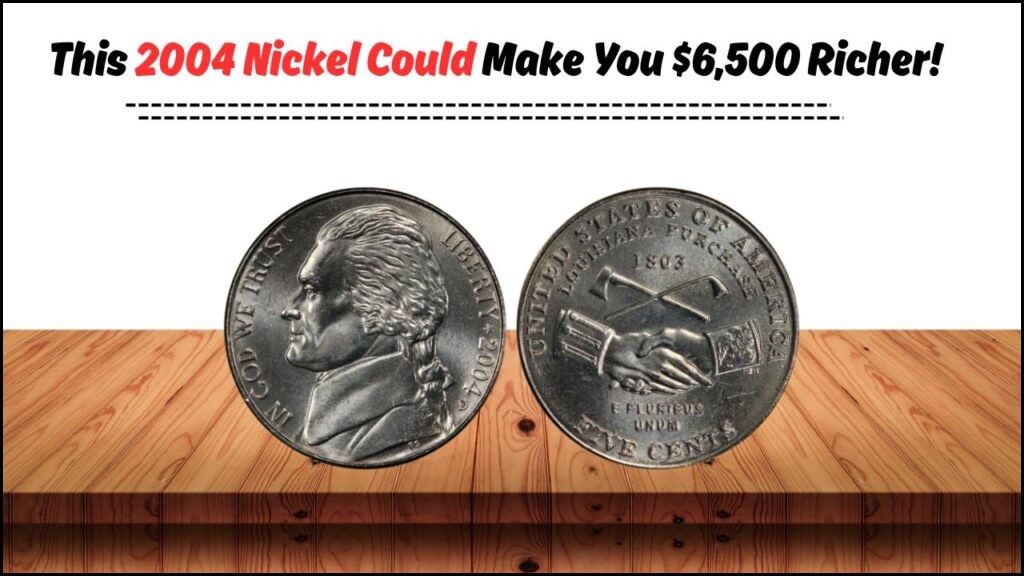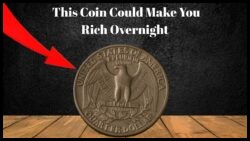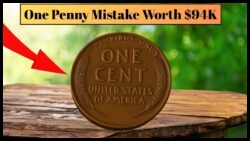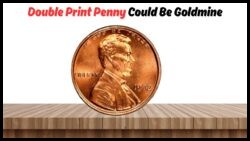Rare 2004 Nickel – In the world of coin collecting, certain rare pieces can skyrocket in value due to minting errors, limited supply, or historical significance. One such coin making headlines again is the 2004-D Jefferson Nickel with the ‘Extra Leaf’ error, a small mistake that has turned ordinary nickels into high-demand collectibles now fetching $6,500 or more at auctions. If you’ve got an old nickel jar lying around, now’s the time to check—it could contain a fortune! Let’s explore what makes this coin so valuable, how to identify it, and what to do if you think you have one in your collection.
What Is the 2004-D ‘Extra Leaf’ Nickel Error?
The U.S. Mint released a special series of Westward Journey nickels in 2004 to commemorate the Lewis and Clark Expedition. One of these designs featured an image of a corn stalk on the reverse side, known as the Wisconsin state quarter reverse, though technically it’s still part of the nickel series.
However, a rare mistake occurred in the Denver Mint, where an extra leaf appeared near the corn’s left side on some coins. This error led to two distinct varieties:
- Extra Leaf Low (ELL) – The leaf curves down.
- Extra Leaf High (ELH) – The leaf points upward.
Why Is This Error So Valuable?
Because the ‘Extra Leaf’ coins were likely created by accidental gouges on the die or intentional tampering, the number minted was extremely limited. Collectors crave rare anomalies, and this one checks all the boxes:
- Genuine U.S. currency
- Limited supply
- Official minting mistake
- Highly recognizable design
Over time, these coins have steadily increased in value, especially those in mint or uncirculated condition.
Key Features to Identify the Extra Leaf Error
Here’s what to look for if you think you have a 2004-D nickel with this rare error:
| Feature | Details |
|---|---|
| Year | 2004 |
| Mint Mark | D (Denver Mint) |
| Reverse Image | Corn stalk (Wisconsin variety) |
| Error Type | Extra leaf on left side of corn husk |
| Error Varieties | Extra Leaf High (ELH), Extra Leaf Low (ELL) |
| Estimated Value | $300 to over $6,500 depending on condition and rarity |
| Condition Required | Higher value for Mint State (MS-65 and above) or uncirculated examples |
Make sure to check both sides of the coin. The obverse should feature Thomas Jefferson, and the reverse should have the corn image with the leaf anomaly clearly visible.
How Much Is a 2004-D Extra Leaf Nickel Worth?
The value of this coin can range dramatically based on its variety and condition. Here’s a general pricing table:
| Coin Type | Grade | Estimated Value (USD) |
|---|---|---|
| Extra Leaf Low (ELL) | Circulated | $300 – $1,000 |
| Extra Leaf High (ELH) | Circulated | $400 – $1,200 |
| Either Variety | MS-63 | $1,500 – $2,500 |
| Either Variety | MS-65+ | $3,000 – $6,500+ |
| Certified by PCGS or NGC | High Grade | Up to $10,000 in rare cases |
The coins graded by trusted authorities like PCGS (Professional Coin Grading Service) or NGC (Numismatic Guaranty Corporation) tend to fetch the highest prices at auctions or from collectors.
Where Can You Sell or Appraise Your Coin?
If you believe you have a genuine 2004-D Extra Leaf nickel, here’s where you can turn to for authentication or sale:
Trusted Coin Grading Services
- PCGS – Professional Coin Grading Service
- NGC – Numismatic Guaranty Corporation
Selling Platforms
- eBay – Great for auctioning to collectors.
- Heritage Auctions – Trusted for rare coin bidding.
- GreatCollections – Ideal for high-value certified coins.
- Local coin shops or shows – In-person evaluation and sale.
Before selling, get your coin professionally graded, especially if you suspect it may be in mint or near-mint condition.
Tips to Protect and Store Valuable Nickels
Once you’ve found or purchased a rare coin like the 2004-D ‘Extra Leaf’ nickel, here’s how to maintain its value:
- Use protective coin holders or flips.
- Avoid cleaning the coin—it can reduce value.
- Store in a cool, dry, dark place.
- Get the coin graded and slabbed for future resale potential.
FAQs of Rare 2004 Nickel
Q1. How many 2004-D Extra Leaf nickels were made?
A: The exact number is unknown, but estimates suggest only a few thousand of each variety exist.
Q2. Can I still find these coins in circulation?
A: It’s rare, but possible. Most have been removed by collectors, but old coin jars or rolls from banks may still contain them.
Q3. Is the ‘Extra Leaf’ error found in all 2004 nickels?
A: No. Only nickels minted in Denver (marked “D”) and featuring the Wisconsin reverse have the error.
Q4. What’s the difference between Extra Leaf High and Low?
A: The direction of the extra leaf—either curving downward (Low) or pointing upward (High).
Q5. Do I need to clean the coin before selling it?
A: Absolutely not. Cleaning can reduce the value significantly. Always submit it in its natural state for grading.






